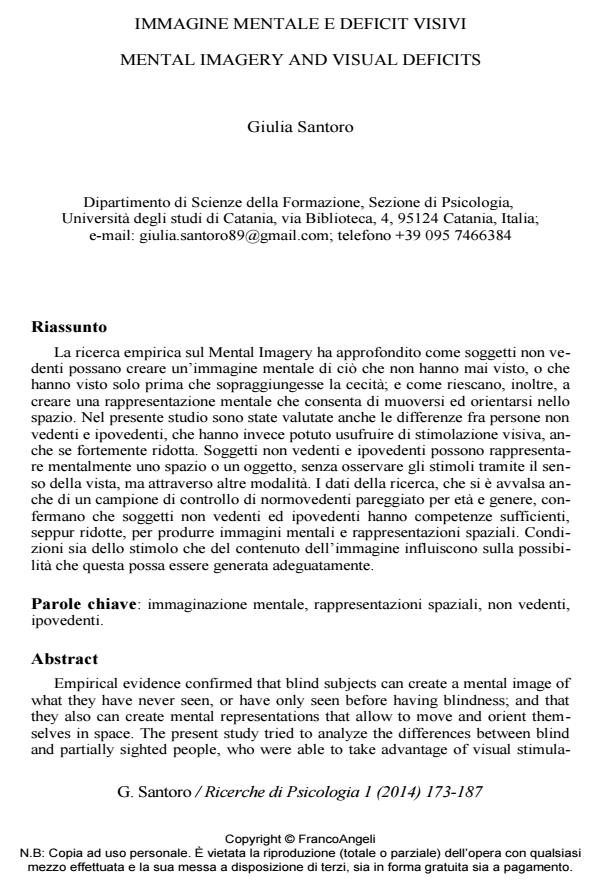Immagine mentale e deficit visivi
Titolo Rivista RICERCHE DI PSICOLOGIA
Autori/Curatori Giulia Santoro
Anno di pubblicazione 2014 Fascicolo 2014/1
Lingua Italiano Numero pagine 15 P. 173-187 Dimensione file 194 KB
DOI 10.3280/RIP2014-001010
Il DOI è il codice a barre della proprietà intellettuale: per saperne di più
clicca qui
Qui sotto puoi vedere in anteprima la prima pagina di questo articolo.
Se questo articolo ti interessa, lo puoi acquistare (e scaricare in formato pdf) seguendo le facili indicazioni per acquistare il download credit. Acquista Download Credits per scaricare questo Articolo in formato PDF

FrancoAngeli è membro della Publishers International Linking Association, Inc (PILA)associazione indipendente e non profit per facilitare (attraverso i servizi tecnologici implementati da CrossRef.org) l’accesso degli studiosi ai contenuti digitali nelle pubblicazioni professionali e scientifiche
La ricerca empirica sul Mental Imagery ha approfondito come soggetti non vedenti possano creare un’immagine mentale di cio che non hanno mai visto, o che hanno visto solo prima che sopraggiungesse la cecita; e come riescano, inoltre, a creare una rappresentazione mentale che consenta di muoversi ed orientarsi nello spazio. Nel presente studio sono state valutate anche le differenze fra persone non vedenti e ipovedenti, che hanno invece potuto usufruire di stimolazione visiva, anche se fortemente ridotta. Soggetti non vedenti e ipovedenti possono rappresentare mentalmente uno spazio o un oggetto, senza osservare gli stimoli tramite il senso della vista, ma attraverso altre modalita. I dati della ricerca, che si e avvalsa anche di un campione di controllo di normovedenti pareggiato per eta e genere, confermano che soggetti non vedenti ed ipovedenti hanno competenze sufficienti, seppur ridotte, per produrre immagini mentali e rappresentazioni spaziali. Condizioni sia dello stimolo che del contenuto dell’immagine influiscono sulla possibilita che questa possa essere generata adeguatamente.
Parole chiave:Immaginazione mentale, rappresentazioni spaziali, non vedenti, ipovedenti.
Giulia Santoro, Immagine mentale e deficit visivi in "RICERCHE DI PSICOLOGIA " 1/2014, pp 173-187, DOI: 10.3280/RIP2014-001010